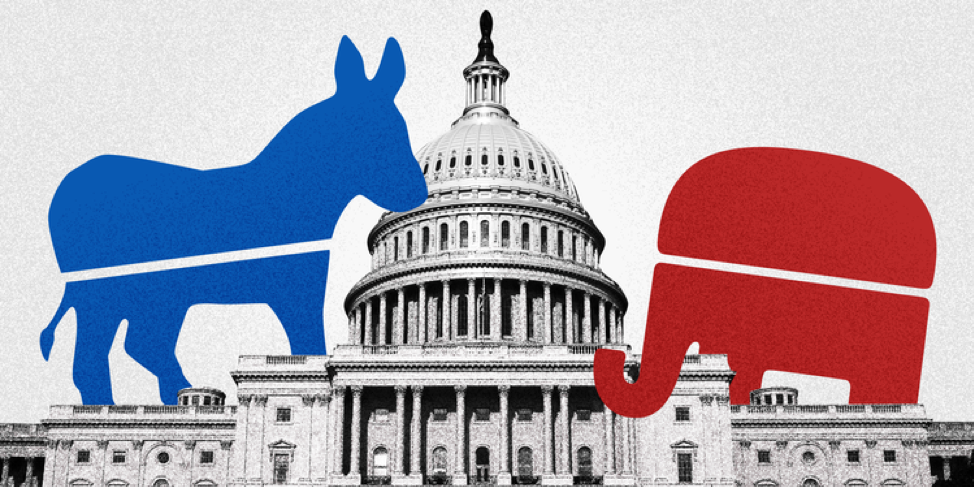LISTSOur biweekly lists lay out notable issues in the news and tell you what you can do about them.
|
SUBSCRIBE TO EMAIL UPDATES:
|
|
11/12/2018 0 Comments Midterm Elections 2018 RecapLast Tuesday were the much anticipated Midterm Elections. We've been providing actions about them for some time now. Here's our recap of what went down.
Before we dive in, we want to highlight a couple more standout races. In one major upset, Democrat Kendra Horn turned Oklahoma City blue for the first time in almost 50 years, defeating Republican incumbent Steve Russell in Oklahoma’s 5th district. And in New York’s 11th Congressional District, which covers Staten Island and a sliver of Brooklyn, Democratic veteran Max Rose beat Trump-endorsed incumbent Dan Donovan. Although a FiveThirtyEight polls gave Rose only a 1 in 4 chance of winning and rated the race “Likely Republican,” Rose won by an astounding six percentage points. And overall, New York, New Jersey, Pennsylvania, and California—Democrats flipped either three or four seats in each—were key to this representation of the Blue Wave. 10 seats remain uncalled, so Democrats have the chance to pick up even more seats as final results continue to trickle in. Of those uncalled seats, Democrats have a lead in four. Democratic control of only one house of Congress might seem like a disappointment, but the House of Representatives alone can do a whole lot of good. Admittedly, progressive legislation that passes the House is unlikely to become law facing opposition from both the Senate and the White House. But a House controlled by Democrats means…
In a major Democratic victory, though, Teens Resist candidate Jacky Rosen beat Republican incumbent Dean Heller to win the seat in Nevada. And, after a very drawn-out race, Democrat Kyrsten Sinema emerged victorious over Republican Martha McSally in Arizona, flipping another seat blue. In Florida, however, a recount is ongoing, presenting a potential opportunity for Democrats (if they win) to limit the Republican net gain to only one seat. The recount is taking place due to the difference between the top two candidates being within Florida’s recount margin of one half a percent. The chance of a Democratic win in the Senate was highly unlikely, given the fact that Democrats had to play defense in many races and had only a handful of opportunities to win Republican-held seats, many of which were in heavily rural, red states. Sinema’s and Rosen’s victories in Arizona and Nevada are significant in their location in the west, which once was thought of as a bastion of conservatism. Though the 'blue wave’ may not have entirely come to fruition within the Senate, a blue ripple has definitely occurred. GUBERNATORIAL RACES Last week, Democrats made impressive gains in gubernatorial races during the midterm elections. The first regular election in all but three states since 2014, the gubernatorial primaries were held in 36 states and three territories. Incumbent state governors running to be reelected included 14 Republicans, 5 Democrats, and 1 independent. Winning 49.4% of the popular vote, Democrats flipped seven Republican strongholds, while Republicans lost six seats on the Federal Reserve Board of Governors. Notably, in Kansas, one of the most conservative states in the nation, Democratic State Senator Laura Kelly won in a decisive victory over current Kansas Secretary of State (and ruby-red Republican) Kris Kobach. Similarly, in the gubernatorial race in Illinois, Michigan billionaire J.B Pritzker (Dem) unseated first term Governor Bruce Rauner (Rep), who supported the suspension of Syrian refugees into our nation. In Wisconsin, Democrat Tony Evers narrowly beat incumbent Republican Scott Walker largely by running on a platform of education. The highly contested race in Florida is currently being recounted, although Democrat Andrew Gillum is lagging slightly behind his opponent. Check the GA/FL section below for more info on those races!! The combination of tireless activism, grassroots efforts, and passionate lobbying across the country will result in substantial progress for the Democratic party. Almost all the governors elected last week will still be in office in 2021, when the next cycle of congressional redistricting begins. This is significant because the 2022 midterm elections will feature new boundaries for House districts based on the 2021 census. In 37 states, the legislature approves these maps, and in the majority of those states, the governor can veto the redrawing of legislation maps. In general, the gains Democrats made could also mean significant liberal policy change, tighter gun laws, and looser marijuana laws. ONGOING RACES IN GA AND FL There are a few races that still do not have a winner as of right now (Monday, November 12th at 3:30 PM). We’re spotlighting the ones that have to do with voting rights and voter suppression. One highly publicized race is the Georgia governor’s race. The candidates are Brian Kemp, a Trump-endorsed ruby-red conservative who currently serves as Georgia’s Secretary of State, and Stacey Abrams, an Obama-endorsed candidate known for her liberal beliefs and bipartisan compromises who has served as the Georgia Assembly’s Democratic Minority Leader since 2010. If Abrams wins, she will be the first Black female governor in United States history. Controversy has been present since the election’s beginning—Kemp’s responsibilities as Secretary of State include overseeing elections, meaning that he would be responsible for the fairness of the race he was a candidate in (pretty backward, right?). As we previously covered, an “exact-match” voting policy was introduced in the fall, which demanded that people’s voter registration documents match their Social Security or driver’s records letter for letter and hyphen for hyphen. The policy was meant to combat mostly nonexistent “voter fraud” and (big surprise) disproportionately affected Black and Latinx voters in Georgia. Justice groups affiliated with the Abrams campaign sued and the policies were relaxed a little. On Election Day, Georgia voters were faced with three hour-long lines (the time allotted off from work to vote is two hours), malfunctioning equipment, and confusion over absentee and provisional ballots. Kemp won the majority of votes on election night, but Abrams refused to concede. On election night, three counties had reported only some of their mail-in ballots, and four counties had reported exactly zero of them. Those counties lean Democratic. Since then, Kemp has self-coronated himself, while Abrams has continued to fight, saying that she will not concede until every single vote has been counted. The Abrams campaign has filed lawsuits to count late ballots delayed by Hurricane Michael and other similar voting discrepancies. After around-the-clock legal work, the Abrams campaign has found that at least 30,823 ballots have yet to be counted, and the campaign is confident that a runoff election or recount is possible. Kemp has stepped down as Secretary of State, meaning he would not be overseeing a runoff election if that were to happen. Abrams has said that no matter the outcome, it is important for every vote to be counted for the sake of democracy, and has urged Kemp to support her campaign’s efforts to count every vote. Abrams garnered unprecedented support and received 4 percent more of Georgia’s population of white voters than Hillary Clinton did in 2016. She also received half of the votes of white, college-educated women, while Clinton received only a third. A similar situation is occurring in Florida, where progressive Democrat Andrew Gillum is running for governor and Bill Nelson is running for Senate. The races were razor-thin, and the Florida Secretary of State announced that a recount would take place for the gubernatorial, Senate, and agricultural commissioner’s races. This development came after Gillum revoked his concession and various lawsuits were filed. Here is a more detailed description of recounts in the state, if you’re interested. In a major move to combat voter suppression (in future elections), the state also passed a ballot measure that will give over 1 million individuals previously convicted of felonies in Florida the right to vote in the future. BIG FIRSTS & DEMOGRAPHICS!
FIRSTS
Some notable facts about voter demographics in the two-party U.S. House vote:
If you want more detailed info and statistics, check out this article and this article! Since the elections were fairly recent and there’s a lot of data still coming in/being analyzed, this is obviously an overview of who voted how. If you’re interested, make sure to do some googling in a couple weeks!
0 Comments
Leave a Reply. |
UPdatesThese lists include featured organizations, scripts, numbers, news updates and inspirational activists. Archives
January 2022
Categories |
About |
Content |
|


 RSS Feed
RSS Feed
